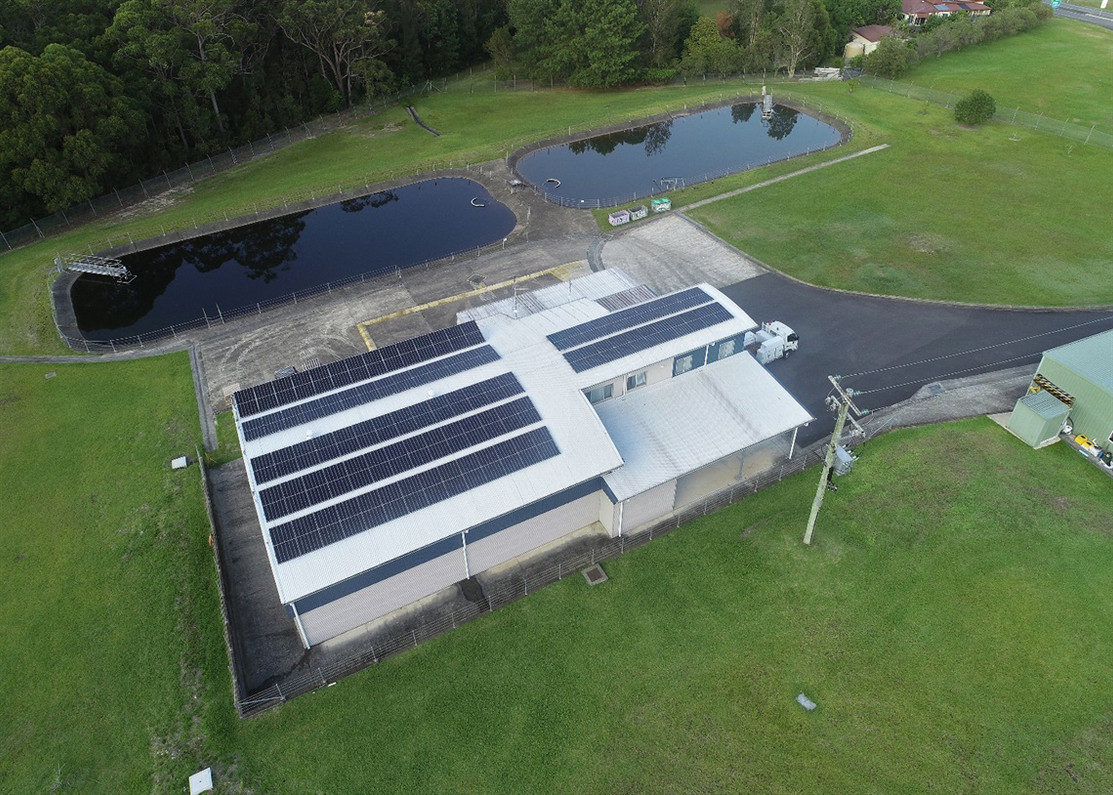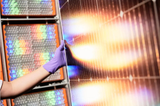NSW council turns to solar to power water and sewer sites
The MidCoast Council in the New South Wales Hunter region has made the shift to solar to help power its water and sewer infrastructure as part of a broader commitment to powering all council operations with 100% renewable energy by 2040.

Image: MidCoast Council
Rooftop PV systems with a combined 126 MW generation capacity have been installed across five MidCoast Council water and sewer sites as part of a $265,000 two-year project to further the local government association’s renewable energy targets and reduce non-renewable energy costs.
More than 400 solar panels have been installed at the Tuncurry and Bulahdelah water treatment plant, Tea Gardens Sewer Pump Station 13 and the Coopernook and Manning Point sewage treatment plants.
Council said its water and sewer infrastructure accounts for 80% of its overall power use and the systems, which range from 37 MW to 8 MW and are capable of generating a combined 239 MWh of clean energy per annum, will reduce its operating costs by $60,000 per year.
MidCoast Council Executive Manager of Water and Systems, Marnie Coates, said installing solar systems at the sites is an environmental and financial investment in the future.
“Thanks to the reduced electricity costs at the sites, we expect the project to pay itself off within five years,” she said. “After that, the sites will continue to draw energy from the sun free of charge, which will result in ongoing savings.”
Coates said the five systems feature roof-mounted panels and grid-connected string inverters with analytics hardware from software provider Solar Analytics installed to monitor the performance of the systems.
“This hardware is great because it gives us real-time data on how much electricity we’re generating, how much we’re consuming, and how much we’re delivering back to the grid,” she said. “It also lets us know what we should be generating based on current weather conditions, so we can identify and resolve any issues if they arise.”
The five PV power systems installed at the water and sewer sites is part of the MidCoast Council’s broader clean energy strategy. Council has been powering all its small water and sewer sites with 100% renewable energy since the start of 2023 courtesy of an electricity purchasing agreement.
Coates said purchasing accredited renewable energy from an electricity provider was a sustainable way to power some of council’s smaller assets.
“Many of these sites don’t have a large enough physical footprint to generate their own energy,” she said. “Purchasing green energy allows us to reduce the carbon emissions associated with our water and sewer operations when solar power or other forms of onsite renewables aren’t an option.”
Recent Posts
-
Oxford PV, Fraunhofer ISE achieve ‘record-breaking efficiency’ for PV module
Solar cell developer Oxford PV and Fraunhofer ISE have successfully developed a full-sized tandem PV …1st Feb 2024 -
New research shows impact of dust on PV module temperature, performance
New research from Pakistan shows that dust could reduce PV panel performance through the shielding e …1st Feb 2024 -
Chinese PV Industry Brief: JinkoSolar, Arctech unveil 2023 earnings forecasts
JinkoSolar says it expects a 2023 net profit ranging between CNY 7.25 billion ($1.02 billion) and CN …1st Feb 2024




